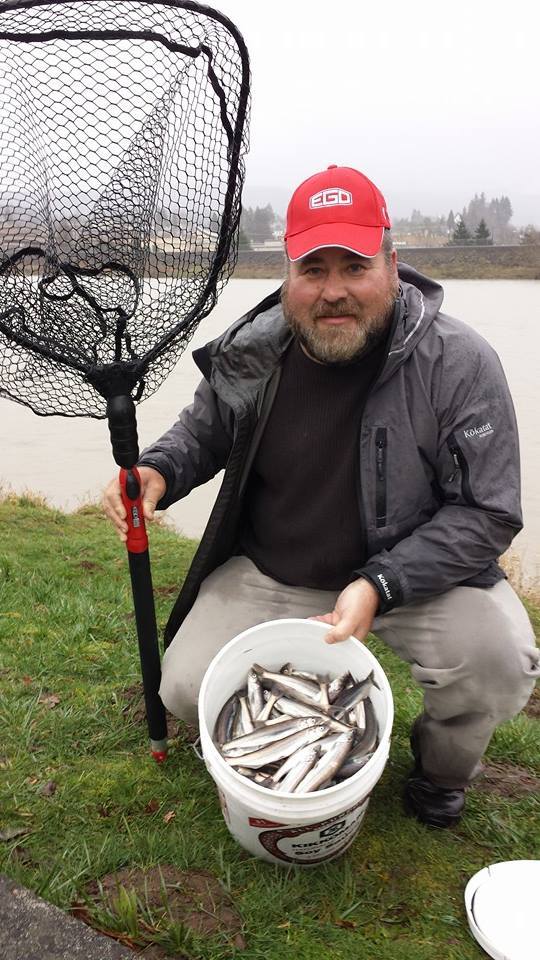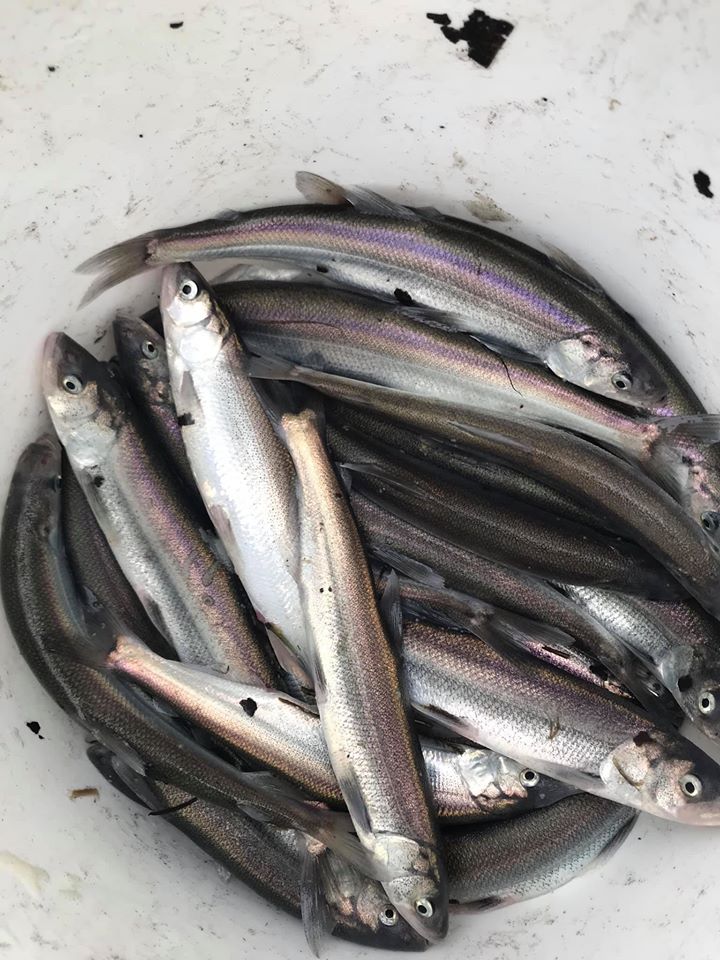WDFW approves another sport smelt dip-net fishery in the Cowlitz River this coming Wednesday Leave a reply

The Cowlitz River smelt dip-net fishery Part II will return on Wednesday (Feb. 26)!
“We’re still seeing a pretty strong run of smelt,” said Laura Heironimus, the lead Washington Department of Fish and Wildlife (WDFW) Columbia River smelt manager. “The commercial catch on Monday averaged about 250 pounds per delivery so that’s considered good. There is still a good presence of smelt in the Lewis and Kalama as well as the Cowlitz. We are still a ways away from the next opener so hopefully fishing will remain good.”
Commercial catch deliveries on Feb. 13 also averaged more than 573 pounds. Heironimous says anytime commercial fishermen catch anything over 200 pounds it is indicative of a very strong run.
Sport dip-netters on the Cowlitz River will be allowed to fish from 8 a.m. to 1 p.m. from the Highway 432 Bridge to the Al Helenberg Memorial boat launch located approximately 1,300 feet upstream from the Highway 411/A Street Bridge in Castle Rock.
Dip-netters in the last opener on Feb. 14 caught an estimated 35,000 pounds in the Lower Cowlitz according to Heironimus, and the next weekday fishery will likely keep the catch down.
Compliance in general was good amongst those who turned out, she said, although there were those individuals who weren’t compliant and catching more than their daily limit.

Each dip-netter may retain 10 pounds of smelt daily with no more than one day’s limit in possession. Ten pounds is about a quarter of a 5-gallon bucket. No fishing license is required to dip net for smelt in this limited fishery.
More Columbia River mainstem test-level gill-net commercial fisheries will continue to occur every Monday and Thursday from 7 a.m. to 5 p.m. each day through Feb. 27.
The pre-season report indicates the 2020 smelt return is a low to moderate run size and expected to be similar to the 2019 return, which was an estimated 4.2-million pounds.
That 2019 smelt return estimate was the highest since 2016 and 66 percent of the 2011 to 2018 average. It also paints a much brighter picture than the 370,000 pounds in 2018 and 1.6-million pounds in 2017.
During 2014-2017, limited sport smelt fisheries occurred in the Cowlitz and Sandy rivers. In the Cowlitz it was limited to one to five days annually (five to six hours per day) and the Sandy was only open in 2014 and 2015 (two to four days annually and six hours per day). During those times sport dip-netters harvest averaged 159,060 pounds with a low of 540 pounds to a high of 290,770 pounds.
There were commercial fisheries from 2014 to 2018 consisted of eight fishing periods over four weeks on the Columbia River mainstem.
Sport dip-netting for smelt was a huge draw from the 1980s to the early 2000s when thousands of people dressed in waders and dip-nets would line the Cowlitz River shoreline.
Smelt returns have steadily declined to the point where they were listed on the Endangered Species Act in the spring of 2010. Commercial and recreational fisheries were subsequently closed in 2011-2013.
There was one day of sport dip-netting in 2017 when 1.6-million pounds returned; and one day in 2016 when 5.1-million pounds returned along with opportunities both years on the Sandy River in Oregon.
There were also fishing seasons – five days total in 2014 and two days in 2015 –plus opportunities on the Sandy River.
Smelt abundance increased steadily from 2011 to 2014 when it peaked at 16.6-million pounds in 2014.
Ocean environmental conditions were favorable for marine survival during 2012-2013 but then deteriorated dramatically although improvement was seen the past few years.
NOAA Fisheries, which oversees ESA-listed stocks, gave the green light for a limited sport dip-net harvest. Initial indicators suggest this smelt run is strong enough to offer this limited opportunity while still meeting conservation goals and help the population rebuild.

